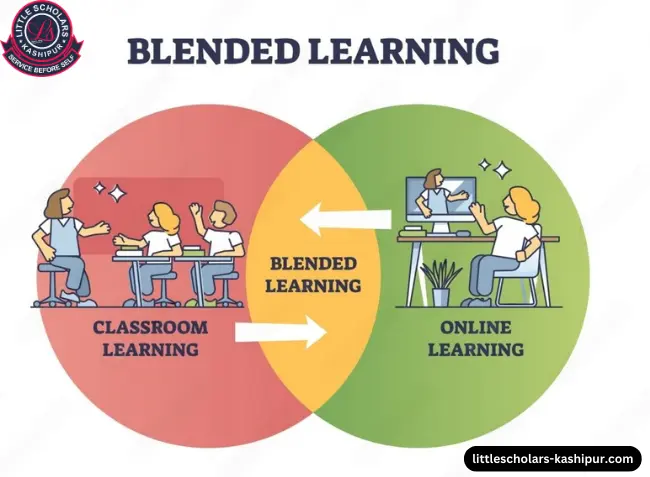Blended learning has emerged as a revolutionary approach to education, combining the best of online and traditional classroom learning. By blending digital resources with face-to-face instruction, educators can create dynamic learning experiences that cater to diverse student needs and preferences. In this article, we'll explore the concept of blended learning, its benefits, implementation strategies, challenges, best practices, case studies, future trends, and its relevance in various educational settings.
Understanding Blended Learning
Blended learning refers to a pedagogical approach that integrates digital technologies and online learning platforms with traditional classroom methods. It encompasses a wide range of models, from flipped classrooms to hybrid learning environments, where students have the flexibility to engage with course materials both in person and online. By incorporating multimedia resources, interactive exercises, and collaborative tools, blended learning aims to enhance student engagement and learning outcomes.
Benefits of Blended Learning
The versatility of blended learning is one of its main benefits. Students can access course materials anytime, anywhere, allowing for personalized learning experiences that accommodate individual learning styles and paces. Moreover, blended learning promotes active participation and interaction, fostering a sense of ownership and autonomy among students. By combining online assessments with face-to-face discussions, educators can provide timely feedback and support, leading to improved academic performance.
Implementing Blended Learning
Designing and implementing a successful blended learning program requires careful planning and collaboration among stakeholders. Educators must select appropriate digital resources and tools that align with learning objectives and curriculum standards. Additionally, training and professional development opportunities are essential to equipping teachers with the necessary skills and knowledge to effectively integrate technology into their instruction. By creating a supportive learning environment and providing ongoing support, schools can ensure the successful implementation of blended learning initiatives.
Challenges of Blended Learning
While blended learning offers numerous benefits, it also presents challenges that need to be addressed. Technological barriers, such as limited internet access and outdated equipment, can hinder the effectiveness of blended learning programs, particularly in underserved communities. Moreover, educators may encounter resistance to change or lack the necessary training to fully leverage digital technologies in their teaching practice. Ensuring equity and access for all students is another challenge, as disparities in technology access and digital literacy skills can exacerbate existing inequalities in education.
Best Practices in Blended Learning
To maximize the effectiveness of blended learning, educators should adhere to best practices that promote student engagement and success. Clear communication with students is essential, providing them with clear instructions and expectations for online and offline activities. Utilizing data analytics tools can help educators track student progress and identify areas for improvement, enabling personalized interventions and support. Furthermore, promoting collaboration and interaction among students fosters a sense of community and enhances learning outcomes.
Case Studies
Numerous case studies have demonstrated the effectiveness of blended learning in diverse educational settings. For example, in a flipped classroom model, students watch pre-recorded lectures at home and engage in hands-on activities and discussions during class time. This approach has been shown to improve student comprehension and retention of course material. Similarly, hybrid learning programs in higher education institutions have enabled students to balance work and family commitments while pursuing their degrees online.
Future Trends in Blended Learning
Looking ahead, advancements in technology are poised to further transform the landscape of blended learning. Adaptive learning technologies, which tailor instruction based on individual student needs and progress, hold promise for personalized and differentiated instruction. Gamification and immersive experiences, such as virtual reality simulations, can enhance student motivation and engagement by providing interactive and experiential learning opportunities. Additionally, the integration of artificial intelligence and machine learning algorithms can automate administrative tasks and provide insights for instructional decision-making.
Blended Learning in Different Educational Settings
Blended learning can be implemented across various educational settings, including primary and secondary schools, higher education institutions, and corporate training programs. In primary and secondary education, blended learning offers opportunities for personalized instruction and remediation, catering to diverse student needs and learning styles. In higher education, blended learning enables students to access course materials and resources remotely, facilitating flexible scheduling and independent learning. Similarly, in corporate training settings, blended learning provides employees with the flexibility to complete training modules at their own pace while receiving ongoing support and feedback from instructors.
Blended Learning in the Post-Pandemic Era
The COVID-19 pandemic has accelerated the adoption of blended learning models, as schools and universities have been forced to adapt to remote and hybrid learning environments. While the pandemic has presented numerous challenges, it has also highlighted the importance of digital literacy skills and the need for innovative approaches to education. Moving forward, educators must continue to embrace blended learning strategies and leverage technology to enhance student engagement, accessibility, and outcomes.
Conclusion
To sum up, blended learning offers a flexible and individualized approach to teaching and learning, which is a paradigm shift in the field of education. By combining online resources with traditional classroom methods, educators can create dynamic learning experiences that meet the needs of diverse learners. While blended learning presents challenges, such as technological barriers and resistance to change, its potential to revolutionize education is undeniable. As we navigate the post-pandemic era, embracing blended learning will be essential to preparing students for success in a rapidly evolving digital world.




